UPSC Daily Current Affairs- 22nd May 2024 | Current Affairs & Hindu Analysis: Daily, Weekly & Monthly PDF Download
GS-I/Geography
Rangelands
Source: DTE
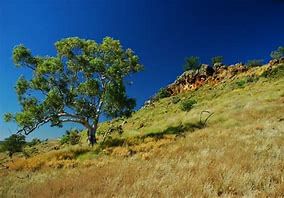
Why in News?
The recently published report, "Global Land Outlook Thematic Report on Rangelands and Pastoralists" by the United Nations Convention to Combat Desertification highlighted that rangelands are facing a 'silent demise'.
About Rangelands:
- The rangelands constitute Earth's land cover primarily consisting of natural grasslands utilized by livestock and wild animals for grazing and foraging.
- Types of vegetation found in rangelands may include tallgrass prairies, steppes (shortgrass prairies), desert shrublands, shrub woodlands, savannas, chaparrals, and tundras.
- Rangelands are known as "Wild Open Spaces," spanning approximately half of the earth's land surface and half of western North America.
Reasons for Degradation:
- Deterioration is primarily a result of converting pastures to cropland and other land use alterations driven by population growth and urban expansion.
- Factors contributing to degradation include rapidly increasing food, fiber, and fuel demands, excessive grazing, land abandonment, and policies encouraging overexploitation.
Significance of Rangelands:
- Rangelands serve various purposes such as livestock forage, wildlife habitat, water sources, mineral resources, wood products, wildland recreation, open space, and natural beauty.
- They play a crucial economic role in many nations and are integral to cultural identities, hosting a quarter of the world's languages, World Heritage Sites, and influencing the value systems of pastoralists over millennia.
- Approximately two billion individuals, including small-scale herders, ranchers, and farmers, who are often economically disadvantaged, rely on healthy rangelands globally.
GS-I/Geography
Aircraft Turbulence
Source: Independent
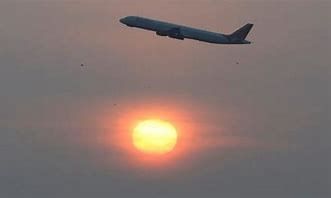
Why in the News?
Recently, one passenger died of a suspected heart attack and 30 others were injured after a Singapore Airlines flight from London to Singapore hit severe turbulence.
About Aircraft Turbulence:
- Turbulence refers to the disruption of airflow over the wings of an airplane, leading to irregular vertical motion.
- These pockets of disturbed air can be caused by various factors, primarily unstable weather patterns that trigger storms.
Types of Aircraft Turbulence:
- Wind Shear: This turbulence occurs due to a sudden change in wind direction, vertically or horizontally. It is challenging for pilots, especially near thunderstorms or jet streams, as tailwinds abruptly shift to headwinds and vice versa.
- Frontal: Created in the frontal zone when warm air is lifted by a sloping frontal surface and friction between opposing air masses. Most noticeable when warm air is moist, its intensity increases with thunderstorms and is common near them.
- Convective: This type of turbulence arises when the land surface temperature increases, causing the air above to heat up and rise, creating air pockets. Convection currents can affect the descent rate during approach.
- Wake: It forms behind an aircraft when it passes through air, creating wingtip vortices.
- Mechanical: This turbulence occurs when tall solid objects disrupt normal airflow, making the air dirty for planes to fly through.
- Clear Air: It happens when an aircraft moves from one air mass to another with a different direction. Mainly caused by wind or jet streams, it can occur when an aircraft exits a jet stream.
- Mountain Wave: One of the most severe types, these oscillations form on the downwind side of mountains when strong winds flow perpendicularly towards them. Aircraft flying perpendicularly across or downwind of a mountain may experience sudden altitude loss and airspeed reduction.
GS-II/International Relations
Arrest Warrants Issued by International Criminal Court
Source: India TV
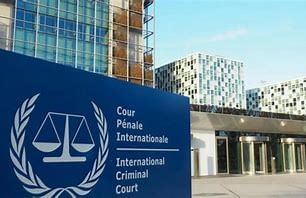
Why in News?
The Prosecutor of the International Criminal Court (ICC) requested arrest warrants against leaders of Hamas and Prime Minister Benjamin Netanyahu of Israel regarding the October 7, 2023 attacks on Israel and the subsequent war in Palestine.
International Criminal Court (ICC)
- The ICC is a permanent court that prosecutes serious international crimes committed by individuals, such as genocide, war crimes, crimes against humanity, and aggression.
- Established to combat global impunity, the ICC aims to bring criminals to justice under international law, irrespective of their status.
- Distinction: The ICC is separate from the United Nations' International Court of Justice, both located in The Hague, Netherlands.
Statute and Membership
- Before its operational launch in 2002, the ICC's founding treaty, known as the Rome Statute, was adopted in 1998 in Rome, Italy.
- Countries become ICC members by signing and ratifying the Rome Statute through their legislatures.
- Currently, 124 countries are ICC members, with a significant representation from African nations.
- Armenia joined the ICC in February 2024.
Functioning of the ICC
- The ICC operates with 18 judges and prosecutors serving non-renewable nine-year terms.
- Operational Phases: The court has pre-trial, trial, and appellate benches.
- Investigation Process: Investigations start with a preliminary examination by the Prosecutor, followed by permission from pre-trial judges to conduct a full investigation.
Jurisdiction and Arrest Warrants
- The ICC can investigate crimes committed by nationals of both State Parties and non-State Parties (e.g., Israel) on the territory of a State Party (e.g., Palestine).
- ICC's Reach: Palestine became the 123rd member of the Rome Treaty in 2015, extending ICC's jurisdiction to include Israel.
- Arrest Warrants: The Prosecutor demanded arrest warrants for leaders from Hamas and Israel, accusing them of crimes against humanity and war crimes.
Crimes and Legal Ramifications
- Crimes Against Humanity: These encompass severe acts like murder, torture, rape, and persecution, carried out systematically against civilians.
- War Crimes: Include violations of the Geneva Conventions during armed conflicts, such as killing civilians, torture, and unlawful destruction of property.
- ICC's Decisions: The decisions made by the ICC are legally binding, requiring cooperation from member states for enforcement.
GS-II/International Relations
Animal Diplomacy
Source: The Hindu

Why in News?
In a recent development, Malaysia, the world’s second-largest palm oil producer is aiming to improve its environmental image by putting forward the “orangutan diplomacy”.
- Animal diplomacy involves the exchange or lending of animals as a gesture of friendship and goodwill between nations. These animals hold cultural significance or are native to the gifting country, making them powerful tools for diplomatic relations.
- China's panda diplomacy, dating back to the Tang Dynasty, exemplifies this practice. Pandas were historically gifted to foreign leaders as symbols of peace and collaboration, fostering closer ties between nations.
- In 2023, China hinted at reviving its panda diplomacy following talks between President Xi Jinping and U.S. President Joe Biden. This move signifies a potential improvement in bilateral relations, with discussions underway for panda exchanges with zoos in Washington D.C. and Vienna, Austria.
Orangutan Diplomacy in Malaysia
- Malaysia has introduced "orangutan diplomacy" inspired by China's panda diplomacy to enhance its environmental reputation linked with palm oil production.
- As the world's second-largest palm oil producer, Malaysia aims to address criticism over deforestation caused by palm oil plantations endangering orangutans.
- The strategy involves allocating orangutans to major palm oil importers like China, India, and the EU, emphasizing their symbolic significance in Malaysia's biodiversity conservation efforts.
Koala Diplomacy at the 2014 G20 Summit
- During the 2014 G20 Summit, Australia showcased koalas to leave a lasting impression on attendees, utilizing koala diplomacy as a soft power tool.
- Besides photo opportunities, koala diplomacy projected Australia's commitment to global environmental issues, sparking discussions on biodiversity conservation and ecosystem protection.
- This event demonstrated how animal ambassadors can influence international relations towards sustainability and cooperation, highlighting the role of wildlife in fostering diplomatic ties.
Future of Animal Diplomacy
- Prospects for enhanced collaboration in animal diplomacy exist, transcending traditional geopolitical boundaries to promote nature conservation and international understanding.
- Nations can engage in joint conservation projects related to ambassador animals, fostering shared responsibilities for wildlife welfare and strengthening diplomatic bonds.
- Smaller countries with unique endangered species can also leverage animal diplomacy to collaborate on conservation efforts, contributing to global education and cooperation on environmental challenges.
GS-II/International Relations
UNREST IN PAK OCCUPIED KASHMIR
Source: The Hindu

Why in News?
Pakistan-occupied Kashmir has experienced violent clashes due to soaring prices of essential goods, resulting in casualties and injuries.
- Pakistan's economic crisis, high inflation, and halted trade with India have exacerbated hardships for the people.
Background:
- Unrest escalated after the arrest of leaders of Jammu Kashmir Joint Awami Action Committee, triggering widespread protests.
About the issue
- Activists and politicians in PoK have criticized Islamabad for discrimination in budgetary allocations and taxation policies.
- Challenges include inflation, wheat shortages, electricity issues, and lack of employment opportunities for locals.
- Complaints about the distribution of hydropower and diversion of development funds have been raised.
Collapse of India trade
- Trade disruptions followed India's increased customs duties and constitutional changes in Jammu and Kashmir, leading to a significant drop in exports.
- India-Pakistan trade has drastically declined over the years, falling far below its potential estimated by the World Bank.
GS-II/International Relations
The Risks of Russia's Nuclear Posturing
Source: The Hindu
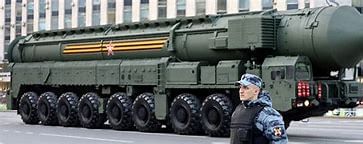
The ongoing Russia-Ukraine conflict has raised concerns due to Russia's nuclear posturing.
The Shift in Russia's Nuclear Policy
What changes have been observed in Russia's nuclear policy?
- Russia's nuclear rhetoric has drawn criticism from Western countries and the international community.
- There is a concern over Russia's potential lowering of the threshold for nuclear weapon use.
- Traditionally, nuclear weapons were reserved for existential threats, but Russia is considering a first-use policy even for non-existent threats.
- Russia's current stance threatens the principle of Mutually Assured Destruction (MAD).
Consequences of Russia's Nuclear Rhetoric for Global Security
What impact does Russia's nuclear posturing have on global security?
- Russia's actions have increased the risk of nuclear escalation and use, potentially encouraging other nuclear-armed states to follow suit.
- The blurred line between conventional and nuclear warfare poses a threat to global security.
- Russia's actions have undermined strategic stability and the global nuclear order, leading to nuclear arms competition.
- Neighboring countries fear potential aggression from Russia, necessitating strong deterrence and accountability measures.
Way Forward
What steps can be taken to address the situation?
- Initiate high-level dialogues involving all nuclear-armed states to reinforce commitments to non-proliferation treaties.
- Provide clear security assurances to non-nuclear states to discourage them from seeking nuclear weapons.
- Revisit agreements like the Budapest Memorandum to enhance their credibility.
GS-II/International Relations
After Ebrahim Raisi's Death - Implications for India
Source: Indian Express

Why in News?
The unexpected passing of Iranian President Ebrahim Raisi has raised concerns about the future leadership of Iran.
India's Interest: India is closely observing Iran's succession plan due to the significant geopolitical and economic impacts involved.
- India-Iran Relations:
- Chabahar Port Agreement: India and Iran recently inked a 10-year deal to enhance trade via the Chabahar Port, vital for connectivity with Afghanistan and Central Asia.
Ebrahim Raisi:
- Ebrahim Raisi, a prominent figure in Iran's theocracy, was on track to succeed and was associated with hardline policies.
- His presidency marked a consolidation of power by hardliners aiming to reinforce the Islamic Republic's foundations.
- Raisi's demise presents challenges for conservative hardliners and paves the way for the Iranian Revolutionary Guards Corps (IRGC) to expand its influence.
- The succession process post-Raisi's death is now uncertain, with various factions competing for power.
Implications for India:
- Trade Relations: The disruption caused by Raisi's death could affect the $2.33 billion trade between India and Iran.
- Regional Stability: Iran's succession plan may impact regional stability and India's projects like the Chabahar port crucial for connectivity.
- Foreign Policy: Changes in Iran's foreign policy could influence India's decisions in the Middle East.
- Security Concerns: Shifts in Iran's stance on regional conflicts could impact India's security considerations.
Way Forward for India:
- India should prioritize economic projects such as the Chabahar Port to safeguard regional trade and strategic interests.
- Maintaining a balance between US relations and ties with Iran through diplomatic channels is essential to navigate sanctions effectively.
GS-III/Environment and Ecology
VENEZUELA LOST ITS LAST GLACIER
Source: Indian Express
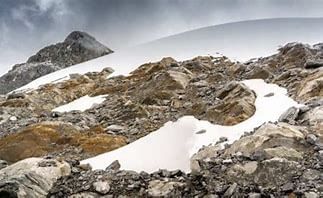
Why in News?
Venezuela has likely become the first country — it certainly won’t be the last — in modern history to lose all its glaciers. This comes after scientists reclassified the Humboldt glacier, Venezuela’s last remaining glacier, as an ice field earlier this month.
Background
- Scientists expected the Humboldt glacier to last another decade. However, it melted at a faster rate than expected.
Key Takeaways
- Venezuela used to be home to six glaciers, located at about 5,000 meters above sea level in the Andes mountains.
- By 2011, five of them had vanished. Scientists expected the Humboldt glacier to last another decade. But it melted at a faster rate than expected, and has shrunk to an area of less than 2 hectares, leading to its downgrade from a glacier to an ice field.
What are glaciers?
- Glaciers are essentially large and thick masses of ice that are formed on land due to the accumulation of snow over centuries.
- According to the United States Geological Survey (USGS), they usually exist and form in areas where mean annual temperatures reach near the freezing point; winter precipitation leads to significant snow accumulations; and temperatures throughout the remaining year do not cause the complete loss of the previous winter’s snow accumulation.
- Due to their sheer mass and gravity, glaciers tend to flow like very slow rivers. Although there is no universal consensus on how large a mass of ice has to be to qualify as a glacier, the USGS says a commonly accepted guideline is around 10 hectares.
Why are glaciers disappearing?
- The reason is quite obvious — it is global warming. Glaciers are melting due to warmer temperatures.
- Since the Industrial Revolution kicked off in the 18th Century, human activities such as burning fossil fuels have been releasing GHGs like carbon dioxide and methane into the atmosphere. These invisible gases trap heat — they allow sunlight to pass through the atmosphere but prevent the heat that sunlight brings from returning into space — leading to a rise in global temperatures.
- In recent decades, the emission of GHGs has skyrocketed, which has resulted in the global average temperature to increase by at least 1.1 degree Celsius since 1880. The temperature rise may seem small but it has had devastating consequences.
- The Andes — a mountain range running through parts of Argentina, Bolivia, Chile, Colombia, Ecuador, Peru, and Venezuela — has witnessed a temperature increase of a high rate of 0.10 degree Celsius in the past seven decades. That is one of the major reasons why Venezuela has lost all of its glaciers.
- In the case of the Humboldt glacier, the melting was accelerated by El Niño, which developed in July 2023. El Niño refers to an abnormal warming of surface waters in the equatorial Pacific Ocean and leads to warmer temperatures.
- India is also at the risk of losing its glaciers. They are melting at unprecedented rates across the Hindu Kush Himalayan mountain ranges.
What are the impacts of glacier loss?
- Glaciers are a crucial source of freshwater, especially during hot, dry periods, for local communities, plants, and animals. Their disappearance would mean that one would have to be entirely dependent on spot rainfall for freshwater.
- The cold water that runs off glaciers keeps downstream water temperatures cooler. This is crucial for many aquatic species in the region as they need cold water temperatures to survive. Glacier loss directly impacts such species.
- Melting glaciers can also contribute to the rise in sea level. The Greenland and Antarctic ice sheets — they are also considered as glaciers — are the largest contributors to global sea level rise.
- For the South American country, however, the biggest impact of losing all of its glaciers will be cultural. Glaciers were a part of the region’s cultural identity, and for mountaineering and touristic activities.
GS-III/Environment and Ecology
Antarctica Parliament
Source: Times of India

Why in News?
India is currently hosting the 46th Antarctic Treaty Consultative Meeting (ATCM 46) in Kochi from May 20-30.
Background
- The National Centre for Polar and Ocean Research in Goa, under the Ministry of Earth Sciences, is organizing the event.
- This meeting will be attended by the 56 member countries of the Antarctic Treaty. The last time India hosted the ATCM was in New Delhi in 2007.
The Antarctic Treaty
- Originally signed by twelve countries in 1959, the Antarctic Treaty effectively designated Antarctica as a neutral region during the Cold War.
- It currently has 56 member countries, including India since 1983.
- The treaty outlines that Antarctica should be utilized solely for peaceful purposes, prohibits militarization, and promotes scientific cooperation among signatories.
India's Role in Antarctica
- India has been a consultative party to the Antarctic Treaty since 1983, actively participating in decision-making processes concerning Antarctica.
- India has established three research stations in Antarctica, namely Dakshin Gangotri, Maitri, and Bharati, with plans for a new station, Maitri II, by 2029.
- In 2022, India reaffirmed its commitment to the Antarctic Treaty by enacting the Antarctic Act.
Agenda before Antarctic Treaty Consultative Meeting (ATCM)
- The ATCM aims to facilitate discussions on various aspects of Antarctica, including law, governance, science, and tourism.
- India will advocate for peaceful governance in Antarctica and present its proposal to build Maitri II during the meeting.
- Any new initiatives in Antarctica require approval from the ATCM.
GS-III/Science and Technology
Malaria Vaccine
Source: MSN
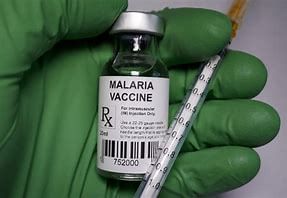
Why in News?
Serum Institute of India (SII) has achieved a significant milestone by sending the first batch of the R21/Matrix-M malaria vaccine to several African countries.
Background
Approximately half a million children in Africa die from malaria annually as reported by the World Health Organisation (WHO).
About Malaria
- Malaria is an infectious disease transmitted by mosquitoes carrying Plasmodium parasites.
- The disease is prevalent in tropical and subtropical regions near the equator, affecting regions like sub-Saharan Africa, Asia, and Latin America.
- Transmission occurs through bites of infected female Anopheles mosquitoes.
- Common symptoms include fever, chills, headache, and fatigue, with severe cases potentially leading to organ failure, coma, or death.
Prevention
- Bed Nets: Insecticide-treated bed nets help prevent mosquito bites while sleeping.
- Antimalarial Medications: Travelers to endemic areas can take prophylactic antimalarial drugs.
- Vaccines: The WHO recommends vaccines like R21/Matrix-M and RTS,S/AS01 to reduce malaria cases and deaths.
- Treatment: Antimalarial drugs, including ACTs, are crucial for treating malaria, emphasizing early diagnosis and prompt treatment.
R21/Matrix-M Malaria Vaccine
- The R21/Matrix-M vaccine targets the Plasmodium falciparum parasite, known for severe malaria cases.
- The vaccine comprises a malaria parasite protein (R21) and an immune-boosting adjuvant called Matrix-M.
- Clinical trials demonstrate a 75% reduction in symptomatic malaria risk in children post-vaccination.
- Recommended for children aged 5 months and older, the vaccine is administered in a three-dose series.
- The WHO's endorsement aims to hasten the vaccine's deployment, especially in sub-Saharan Africa.
- Developed by the University of Oxford and SII with Novavax's adjuvant technology, R21/Matrix-M is the second approved malaria vaccine for children in endemic regions.
GS-III/Economy
RBI's Proposed Framework to Administer Project Financing | Explained
Source: The Hindu

Why in News?
The Reserve Bank of India (RBI) has introduced draft regulations for a Harmonized Prudential Framework and revised DCCO criteria to strengthen the Regulatory Framework for long-term project financing in various sectors.
Key Highlights of the Proposed New Framework:
- Income Recognition and Asset Classification:
The draft framework provides guidelines for Income Recognition, Asset Classification, and Provisioning of Advances for Projects Under Implementation (IRACP-PUIMP).
It stresses the importance of monitoring stress in projects and proactively initiating resolution plans.
General provisioning during the construction stage is set to increase from 0.4% to 5% on all existing and fresh exposures, phased over three years.
- Restructuring Norms:
Norms have been set for restructuring exposure in projects due to changes in the DCCO.
Lenders must have a board-approved policy for resolving stress in projects triggered by a credit event during the construction phase.
Provisioning can be reduced under certain conditions during the operational phase.
- Consortium Arrangements:
Specific exposure limits have been established for projects financed under consortium arrangements.
Individual lenders must maintain a Minimum Exposure Percentage for balanced risk-sharing.
- Financial Closure and Repayment Structure:
Financial closure must be achieved before fund disbursement, discouraging moratoriums on repayments beyond the DCCO period.
Guidelines are set for the repayment tenor and project's financial viability.
- Net Present Value (NPV) Requirement:
A positive NPV is essential for projects financed by lenders, emphasizing annual reevaluation for financial viability.
Guidelines for a standby credit facility to fund cost overruns are provided.
Way Forward:
- Enhanced Monitoring and Compliance: Establish robust monitoring mechanisms to ensure compliance with the new regulations and regularly update the prudential framework.
- Capacity Building: Train bank staff and stakeholders on new regulatory requirements and best practices for project financing.
GS-III/Environment and Ecology
Naegleria fowleri: the Brain-eating Amoeba
Source: MSN

Why in News?
A tragic incident in Kozhikode, Kerala, where a young girl succumbed to Primary Amoebic Meningoencephalitis (PAM), caused by Naegleria fowleri.
- India has witnessed 20 reported cases of PAM, with Kerala alone accounting for the seventh recent infection.
What is Primary Amoebic Meningoencephalitis (PAM)?
- PAM is a rare brain infection triggered by Naegleria fowleri, a single-celled amoeba commonly found in warm freshwater and soil globally.
- Amoebas are unicellular organisms capable of changing shape by extending and retracting pseudopods.
- Higher temperatures around 115°F (46°C) support their growth, and they can endure brief periods in warm surroundings.
- The amoeba typically infiltrates the body through the nasal passage, often during activities like swimming, and migrates to the brain, causing significant harm.
- PAM is not transmissible between individuals.
Symptoms
- Headache, fever, nausea, vomiting, stiff neck, confusion, seizures, hallucinations, and coma are common symptoms of PAM.
- As per the US Centers for Disease Control and Prevention (CDC), the majority of PAM patients succumb within 1 to 18 days from symptom onset, with death typically occurring around the 5th day post symptoms, often following a coma.
Treatment Challenges
- Effective treatments for PAM are currently lacking.
- Medical approaches usually involve a mix of medications such as amphotericin B, azithromycin, fluconazole, rifampin, miltefosine, and dexamethasone.
|
38 videos|5293 docs|1118 tests
|
FAQs on UPSC Daily Current Affairs- 22nd May 2024 - Current Affairs & Hindu Analysis: Daily, Weekly & Monthly
| 1. What are the potential implications for India following Ebrahim Raisi's death? |  |
| 2. How has Venezuela been affected by losing its last glacier? |  |
| 3. What are the risks associated with Russia's nuclear posturing? |  |
| 4. What is the current situation in Pakistan-occupied Kashmir that is causing unrest? |  |
| 5. How is animal diplomacy used in international relations? |  |
















